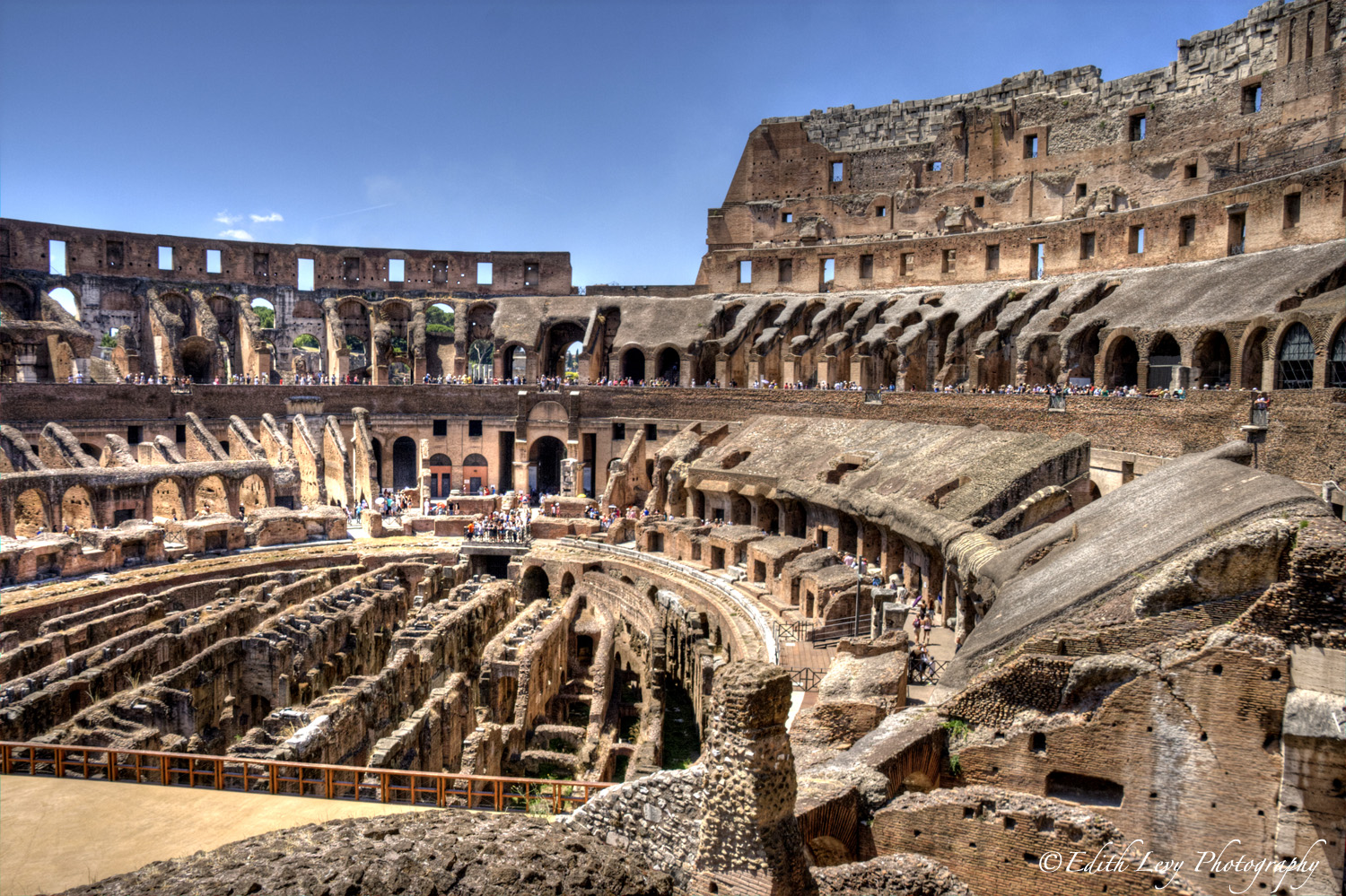Finished in 126 AD, the Pantheon was built as a temple to multiple Roman gods. Today, it still stands as the largest un-reinforced concrete dome in the world. The Oculus dome of the Pantheon stands at 142 ft high with a 142 ft in diameter. It was commissioned by Marcus Agrippa, who also renovated the Maison Carree, another Roman temple. the Maison Carree features many of the classic Roman architectural features, including a stylobate, deep porch, Corinthian columns.
The residences of Roman citizens included insula "apartment" buildings, domus private townhouses, and villa country houses. The interiors of Roman architecture often included mosaics, stucco, fresco designs, and often had patterned floors. These depicted landscape scenes, figures, and building, as well as trompe l'oiel scenes. They had an obsession with ornamentation and favored black, gilt, and red colors. Roman furniture was made of wood, metal, and stone. Stools, or sella, were seats of honor and symbolized legal authority. Romans also developed the first wicker chairs during this time. These pieces of furniture, design trends, and building techniques are still used regularly today and have been a great influence on our current world.
A Roman trompe l'oeil mural
Current Examples
A room featuring wicker furniture, as invented by the Romans
A librarybuilt with a Roman-style dome ceiling
A room influenced by the traditional Roman wall murals and decorative accents with a bust and Roman-style Chaise lounge.
Here's an interesting video on the development of concrete in Ancient Rome:

No comments:
Post a Comment